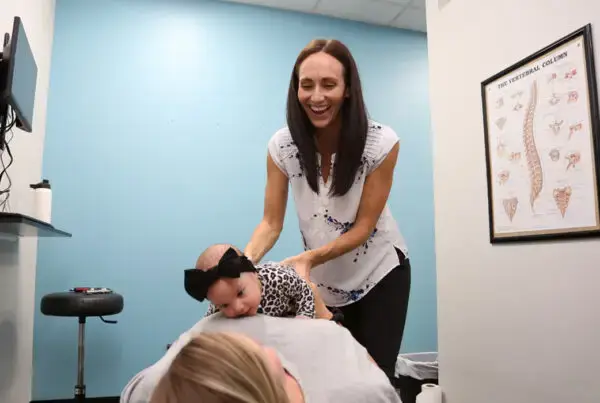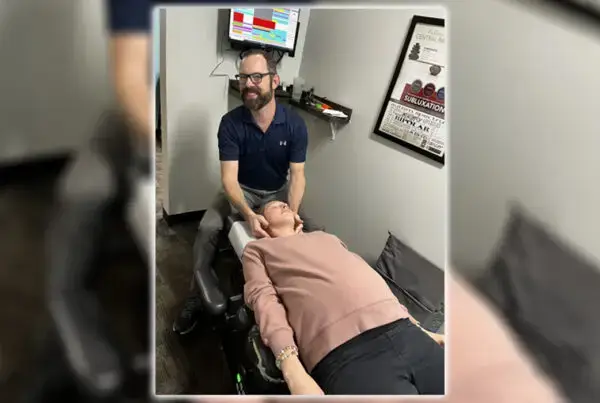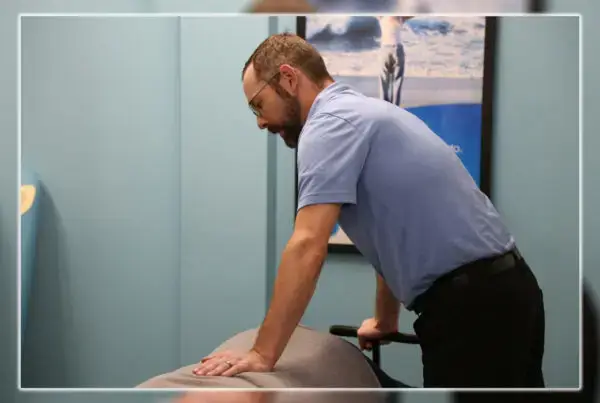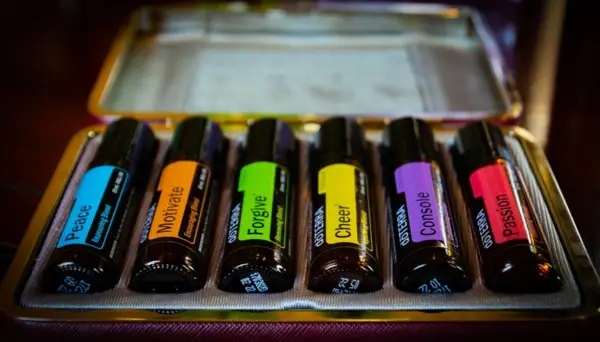
As Arlington Heights Chiropractors, you may be wondering why we would post information about natural cleaning solutions. We are a wellness office that promotes healthy living for our patients. Althought chiropractic adjustments are our main focus, helping patients and the community get healthier is something that we think is very important. This article was written by Cindy Collins, a chemistry teacher and mother who is passionate about keeping her family safe and healthy!
Did you know that the average household contains anywhere from 3 to 10 gallons of toxic materials, most of which are cleaners? According to the CDC, Over the last 12 years, the
– Prevalence of Developmental Disorders has increased 17.1%—that’s about 1.8 million more children with DDs in 2006–2008 compared to a decade earlier;
– Prevalence of autism increased 289.5%;
– Prevalence of ADHD increased 33.0%
While these disturbing increases can’t entirely be attributed to environmental poisons, there are measures we can take to help reduce the risk to our families. Conventional cleaners come with a myriad of issues not limited to health concerns. For one, the consumer is in the dark in regards to what chemicals these cleaners actually contain. Sellers are not required to reveal “trade secret” ingredients and therefore we are left with a generic “DANGER, WARNING, and/or POISON” warning label without a complete list of chemical ingredients. What’s more is that many of these conventional cleaners are specifically targeted for parents of babies and children. Again, according to the CDC, every day, over 300 children in the United States ages 0 to 19 are treated in an emergency department, and two children die, as a result of being poisoned.
What are these mystery chemicals? What are the health effects? Being a chemistry teacher, I went straight to the MSDS (Material Safety Data Sheets) for the most common ingredients in a typical household cleaner and/or laundry detergent (some even found in typical “green” cleaners!). I’ll spare you the details, but if you feel adventurous, take a look for yourself at the Household Products Database published by the U.S. Department of Health and Human Services. You will typically find phrases such as; avoid eye and skin contact, substance may be absorbed through the skin, has been shown to cause injury to the kidney and liver, suspected carcinogen to name a few. And let’s not even get into superbugs, animal testing, and wasteful packaging!
OK, so the chemicals are bad, but how can you get your home clean and free from germs, bacteria and other icky stuff? Because let’s face it, we all want the germ-free countertop. The answer is by using essential oils as an addition to your natural, homemade cleaning products. For centuries, essential oils have been touted for their antibacterial, antiviral and antifungal properties. Take a look for yourself; a recent journal article testing the effectiveness of 14 different essential oils against the most common pathogens: Antibacterial activity of essential oils and their major constituents against respiratory tract pathogens by gaseous contact. I was even able to find a study on the effectiveness of essential oils against MRSA (a superbug resistant to antibiotics and other drugs). Guess what? They work! And they work without the scary MSDS sheets or without a list of chemicals that aren’t even allowed in my chemistry classroom!
Here is a list of 10 Essential Oils for Household Cleaning:
– Tea Tree Oil (melaleuca alternifolia): Antibacterial, antifungal, antiviral and is especially good at killing mold and mildew and disinfecting surfaces.
– Lavender Oil: Antiseptic, antibacterial, antifungal and the aroma has a calming effect so especially good for use in the bedroom. Also good as a bug deterrent.
– Cinnamon: Antibacterial, antiviral, antifungal, antiparasitic and was used in a blend by grave robbers to protect themselves during the 15th century plague.
– Clove: Antimicrobial, antifungal, antiviral, antiparasitic and as a fun fact the people on the island of Ternate were free from epidemics until the Dutch conquerors destroyed the clove trees that flourished on the island.
– Eucalyptus: Antimicrobial, antibacterial, antifungal and antiviral and according to Jean Valnet, MD, a solution of 2% eucalyptus oil sprayed in the air will kill 70% of airborne staph bacteria. Also, is a very powerful insect repellant.
– Peppermint: Antibacterial, antiviral, antifungal and has been shown to increase alertness and enhance work performance according to the International Journal of Neurosciences.
– Lemon: Antiseptic and has been shown that vaporized lemon oil can kill meningococcus bacteria in 15 minutes.
– Grapefruit: Antiseptic and refreshing, uplifting and delicious smelling!
– Lemongrass: Antifungal, antibacterial, antiparasitic and is used for purification. My personal favorite because it smells like a sugared lemon to me – yummy!
– Thieves: This is an amazing blend of highly antiviral, antiseptic, antibacterial, and anti-infectious essential oils. It was created based on the legend of 15th century thieves that rubbed these oils on themselves to avoid the plague as they robbed graves. One analysis of this blend showed a kill rate of 99.96% of bacteria after just 12 minutes of diffusing. As a side note, this is my “go-to” oil for all things illness related. In fact, it’s diffusing next to me right now to help recover from (and to not spread to my family members) a summer cold!
Want to give it a try? Try these simple recipes!
What you’ll need:
– A large pot or deep bowl to mix the ingredients.
– A gallon jug or other jug (for storing them in bulk)
– A spray bottle
– Liquid castile soap: Dr. Bronner makes a natural castile soap free of toxic chemicals.
– Borax: found in the laundry section of most grocery stores.
– Washing Soda (sodium carbonate): different from baking soda (sodium bicarbonate), also found in the laundry aisle in some grocery stores, made by Arm and Hammer (yellow box).
– White Vinegar: look for non-GMO or organic if you want to be really good otherwise the cheapest stuff works just as well!
– Label: proper chemical hygiene is to ALWAYS label your bottles and bulk items.
All-Purpose Cleaner (gallon):
– 3 tsp of liquid castile soap
– 2 tablespoons Borax*
– 2 tablespoons washing soda
– 3 cups white vinegar
– 12 cups hot water (distilled or boiled to remove impurities)
– 20 drops of an essential oil of your choice
*Borax (sodium borate) is slightly controversial in its safety around small kids and pets. It is considered safe according to MSDS in dilute solutions like this, but if you aren’t sure just leave it out! It’s a great stain remover, but is completely OPTIONAL.
In a deep bowl or pot add washing soda. Slowly add in the vinegar (yay chemical reaction!). Add remaining ingredients and mix well.
Powder Laundry Detergent (bonus!):
– 1 bar of your choice (Fels-Naptha or other cold pressed soap) finely grated or 1 cup Ivory Flakes.
– 1 cup washing soda
– 1 cup borax
– 1 cup baking soda
– 1 cup oxygen bleach such as Oxy-Clean (optional)
– 15 drops of essential oil – I recommend lavender.
Mix all together in an air tight container; use 1-2 tablespoons per load. These ingredients do not produce suds, so are safe for front loaders and HE machines.
Mosquito Repellant (another bonus!):
– 10 drops peppermint essential oil
– 10 drops melaleuca alternifolia (tea tree oil) essential oil
– 10 drops citronella essential oil*
– 10 drops lemongrass essential oil
– 5 drops purification essential oil*
– Or any combination of the above essential oils and/or you could add some witch hazel or vodka to help disperse the oil.
– Enough distilled water to keep the concentration of essential oils to be less than 15% for safety. Honestly, I just “eyeballed” it.
*citronella may not be safe for pregnant mothers or women trying to get pregnant.
Works Cited
. Centers for Disease Control and Prevention, 12 Apr. 2012. Web. 22 July 2013.Centers for Disease Control and Prevention
“Developmental Disabilities Increasing in US.” . Centers for Disease Control and Prevention, 14 June 2011. Web. 22 July 2013.Centers for Disease Control and Prevention
U.S.A.: Life Science Pub., 2011. Print.Essential Oils Desk Reference.
“Hazardous Household Products.” . N.p., n.d. Web. 22 July 2013.- HE-368-1
“Household Products Database – Health and Safety Information on Household Products.” . N.p., n.d. Web. 22 July 2013.Household Products Database – Health and Safety Information on Household Products
Shigeharu Inouyea,*,. “Journal of Antimicrobial Chemotherapy.” (n.d.): n. pag. . Web. 23 July 2013.Antibacterial Activity of Essential Oils and Their Major Constituents against Respiratory Tract Pathogens by Gaseous ContactAntibacterial Activity of Essential Oils and Their Major Constituents against Respiratory Tract Pathogens by Gaseous Contact

